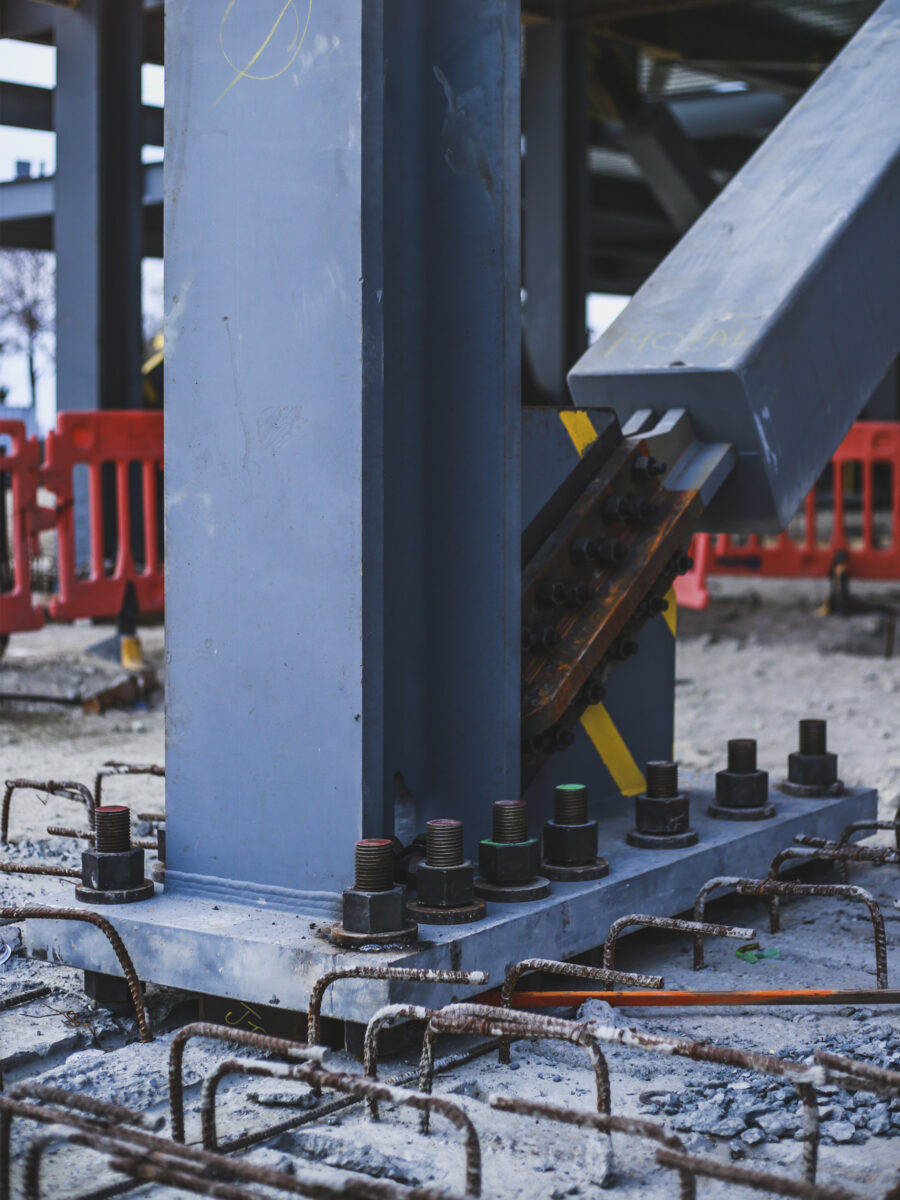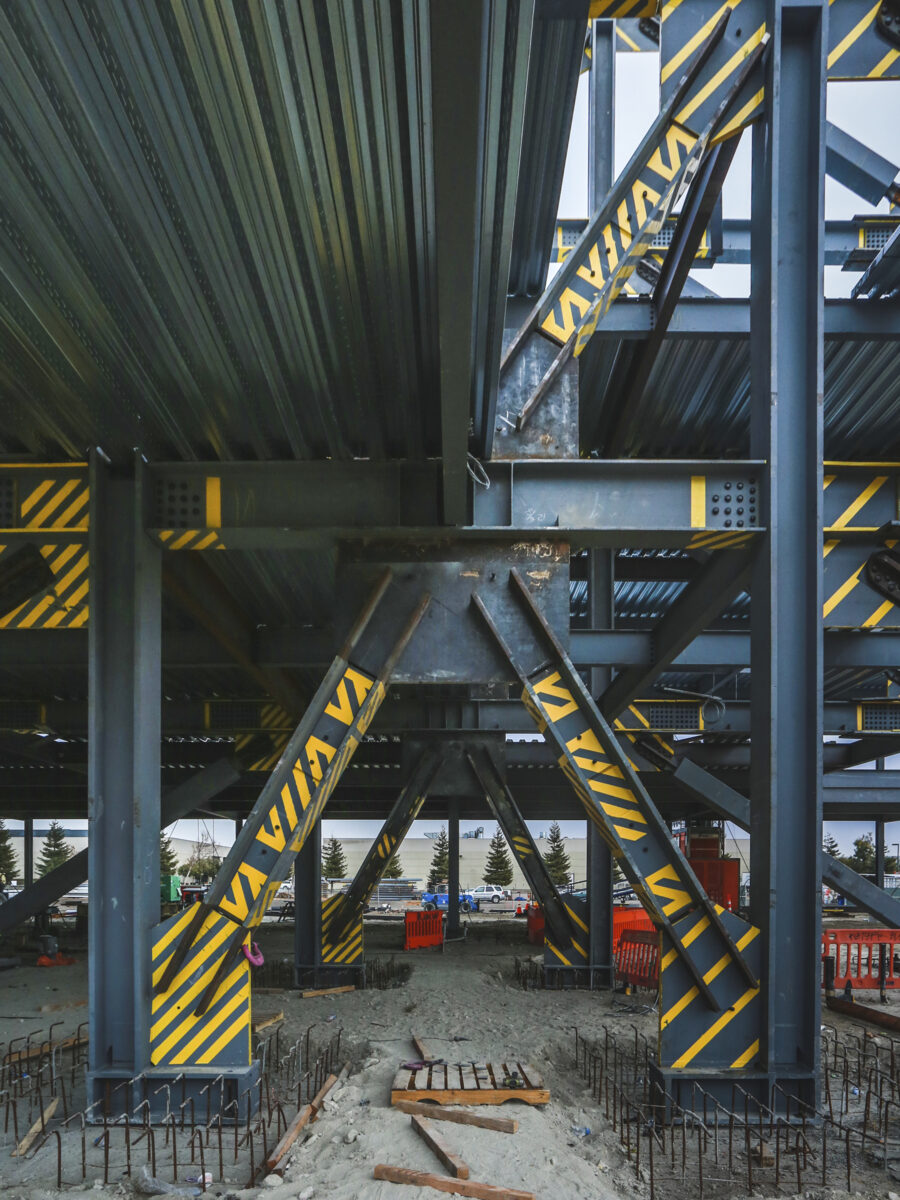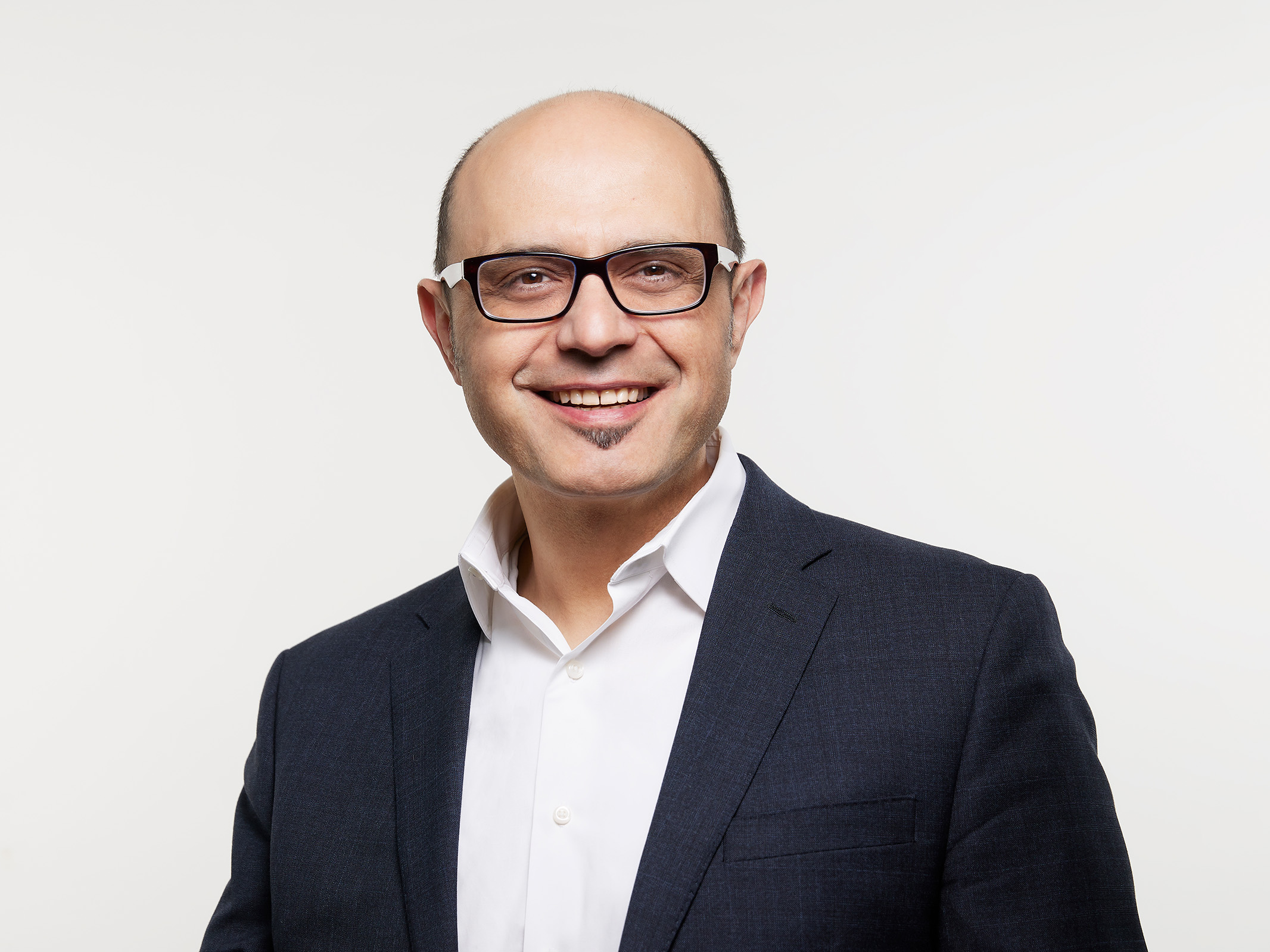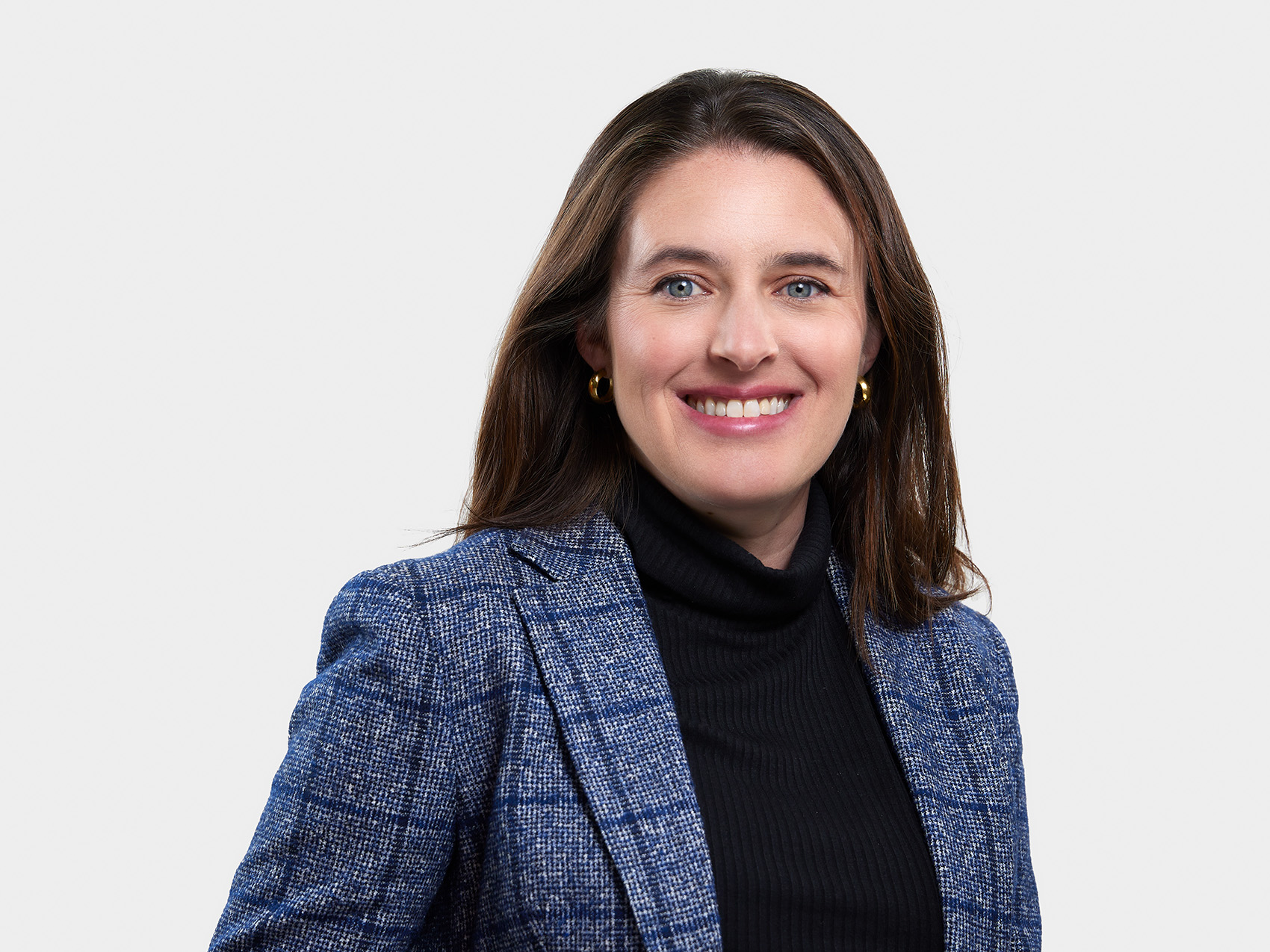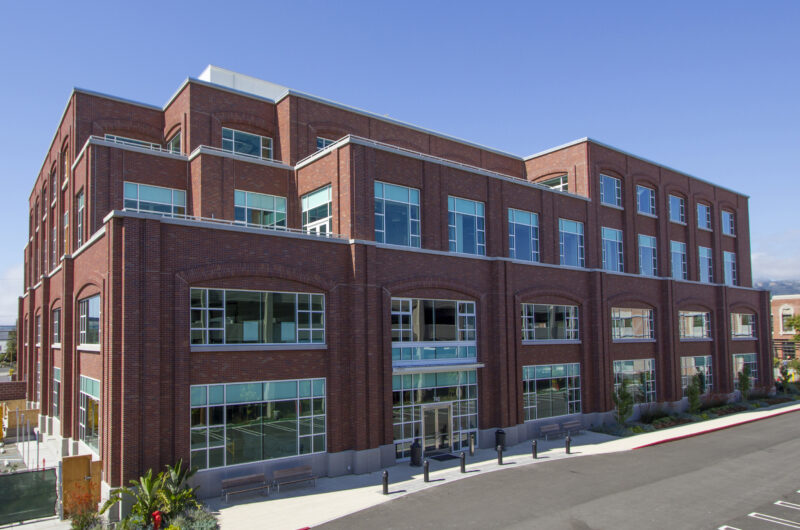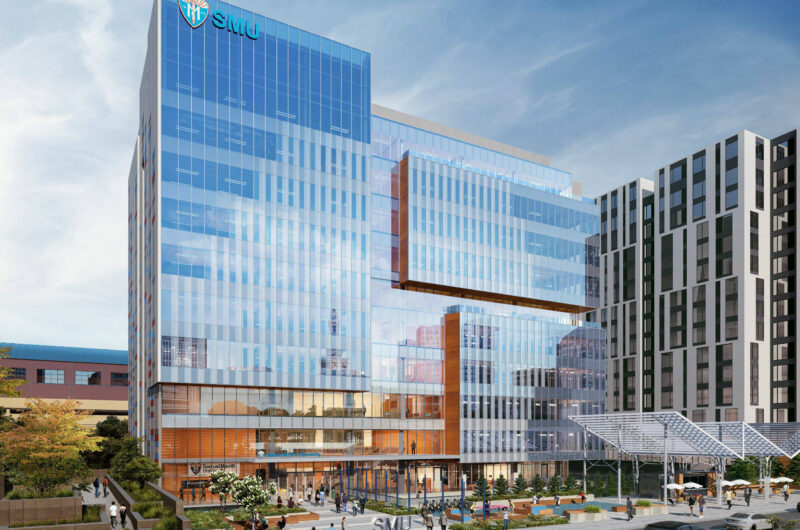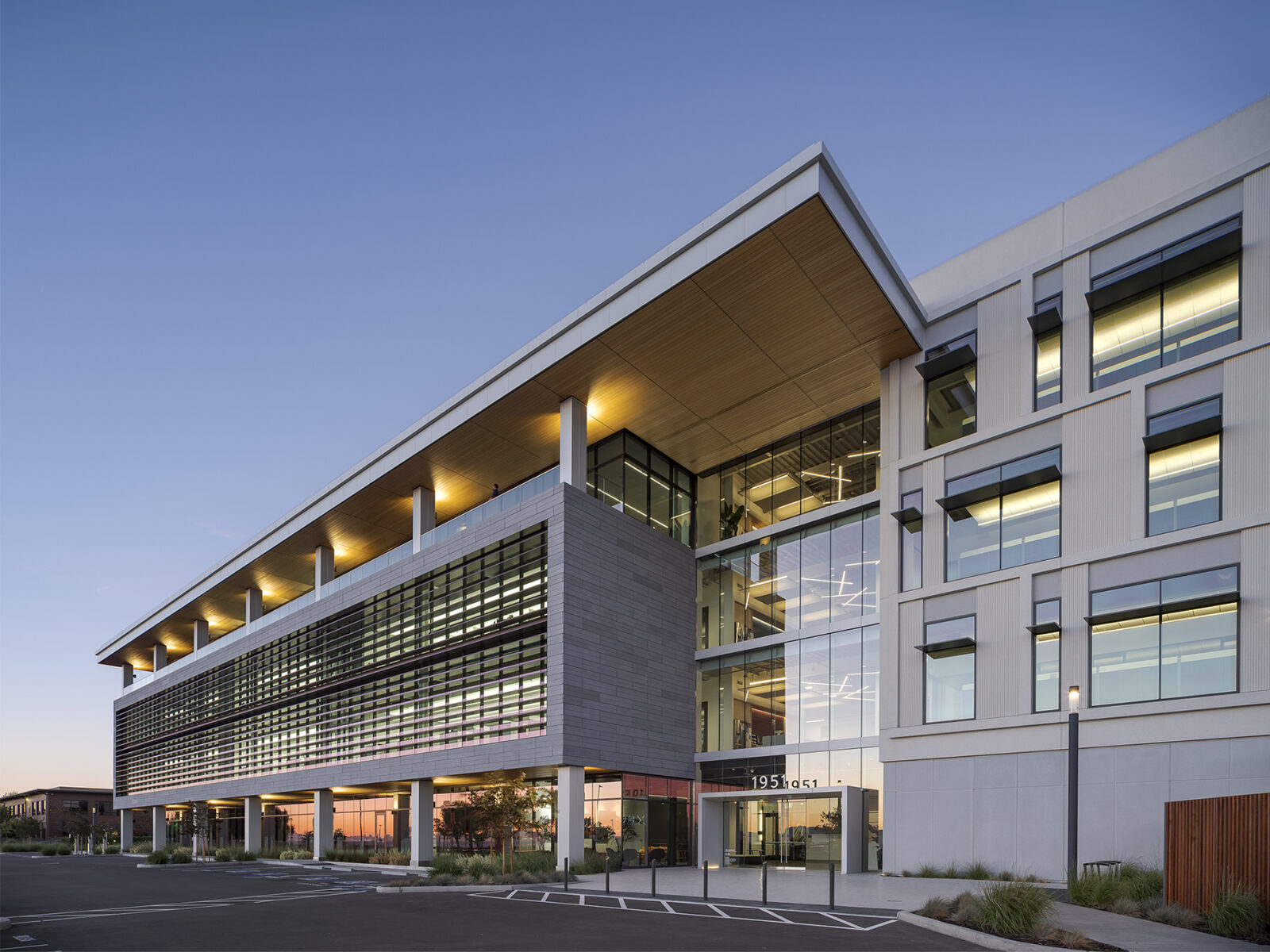
Exelixis Life Sciences Headquarters
A new steel-framed four-story structure demonstrates the advantages of a buckling-restrained brace mast frame.
Seismic Resilience
A cutting-edge earthquake bracing system, known as a steel mast (strongback) frame, provides enhanced seismic resilience and improved reliability at a lower cost.
Innovative Design
The strong steel mast and attached buckling-restrained brace (BRB) frames are designed to be highly redundant, reducing the need for multiple lines of perimeter framing and freeing up space for open architectural programming.
Advanced Analytics
In addition to standard equivalent lateral force (ELF) and response spectrum analysis (RSA) methods, we used nonlinear static analyses and dynamic shaking simulations to gauge performance and validate design assumptions.
Integrated Value
While there was an additional cost for building the vertical mast, it was effectively offset by the overall reduction in the quantity and size of BRBs. The total tonnage of steel framing for the entire structure was an efficient 12 psf.
This new four-story building within Alameda’s Harbor Bay Business Park serves as the headquarters for Exelixis, a growing oncology-focused life-science company. Both the developer and the tenant desired a cost-effective structure with an open-space plan that allowed future flexibility across the 220,000-square-feet of floor area. These new headquarters, along with the three other buildings already occupied by Exelixis along Harbor Bay Parkway, creates a campus environment, providing staff a variety of workspaces, conference and training rooms.
Challenges
For midrise steel structures in highly seismic areas, Special Concentrically Braced Frames (SCBFs) offer one of the most efficient solutions for resisting lateral loads. The ductility and controlled response of the Buckling-Restrained Brace (BRB) devices are effective ways of improving the performance and reliability of SCBFs, allowing the structure to be designed for reduced seismic loads. However, under high seismic loads, these systems can experience large drifts and weak stories that can damage the structural frame, exterior cladding, interior construction, stairs and elevators, limiting the building’s ability to function following a large earthquake. In addition, the full benefit of the more costly BRBs devices is not effectively harnessed, since the overall strength of the frame is limited by just a few critically loaded members.
An innovative approach to seismic bracing
To balance economy and performance of the building, SCBFs, featuring BRBs, are used for the seismic load resisting system. While seismic resilience was a high priority to reduce the likelihood of damage and limit downtime for repairs, it had to be achieved without adding a significant cost. Our solution incorporated a rocking mast (or strong-back) into the BRB frames to reduce the anticipated drift and eliminate weak story response. This innovative approach provides improved performance and cost-effectiveness over conventional braced-frame systems.
-
Location
Alameda, CA
-
Square Footage
220,000 sf
-
Cost
$60 million
-
Completion Date
2023
-
Owner
srmErnst Development Partners
-
Architect
brick architecture & interiors
-
Contractor
Charles Pankow Builders
-
Photography
Kyle Jeffers; Tipping (construction photograph)
AWARDS
2022 SEAONC Excellence in Structural Engineering, Award of Merit, New Construction
LEED Gold Certified
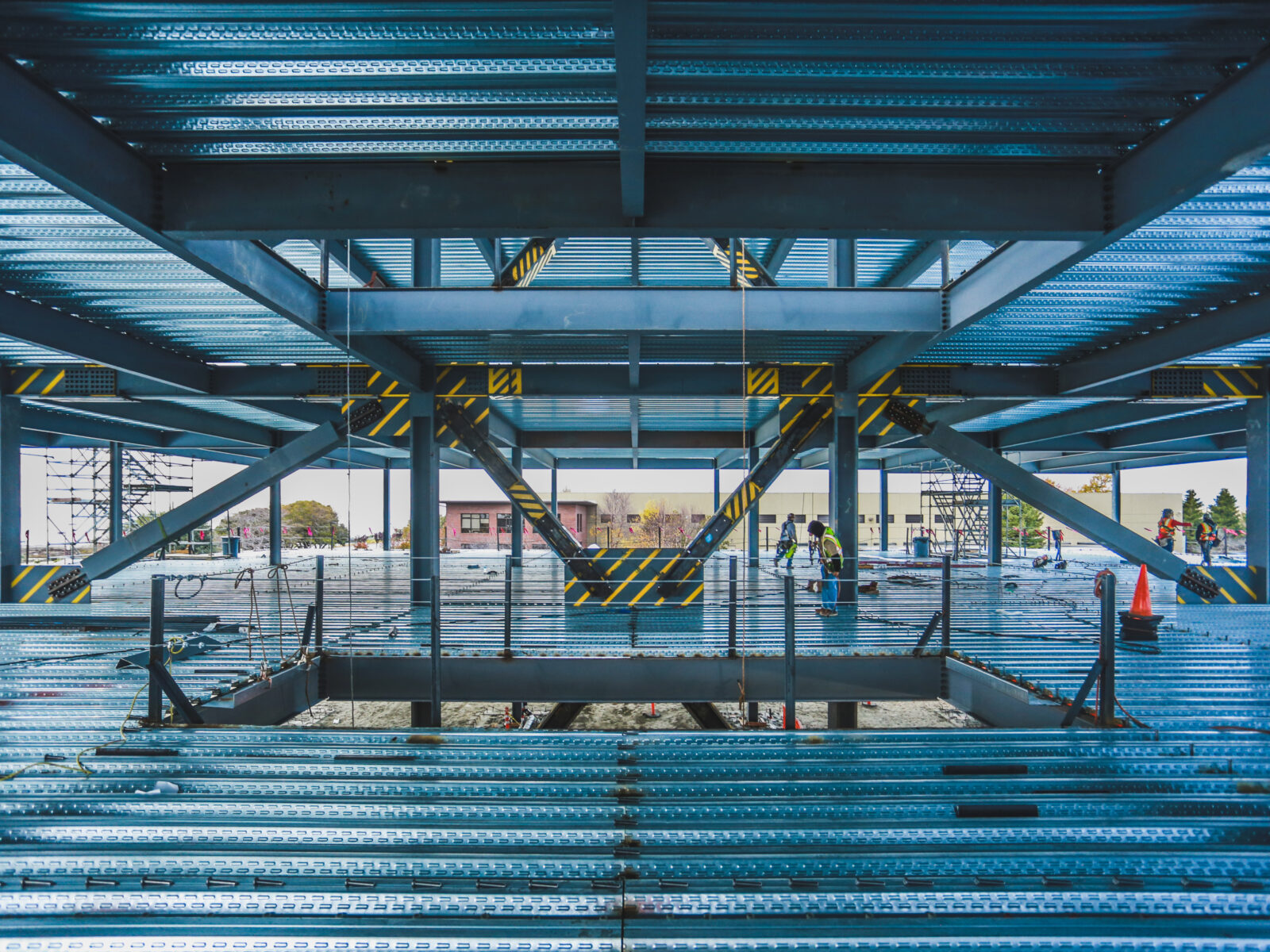
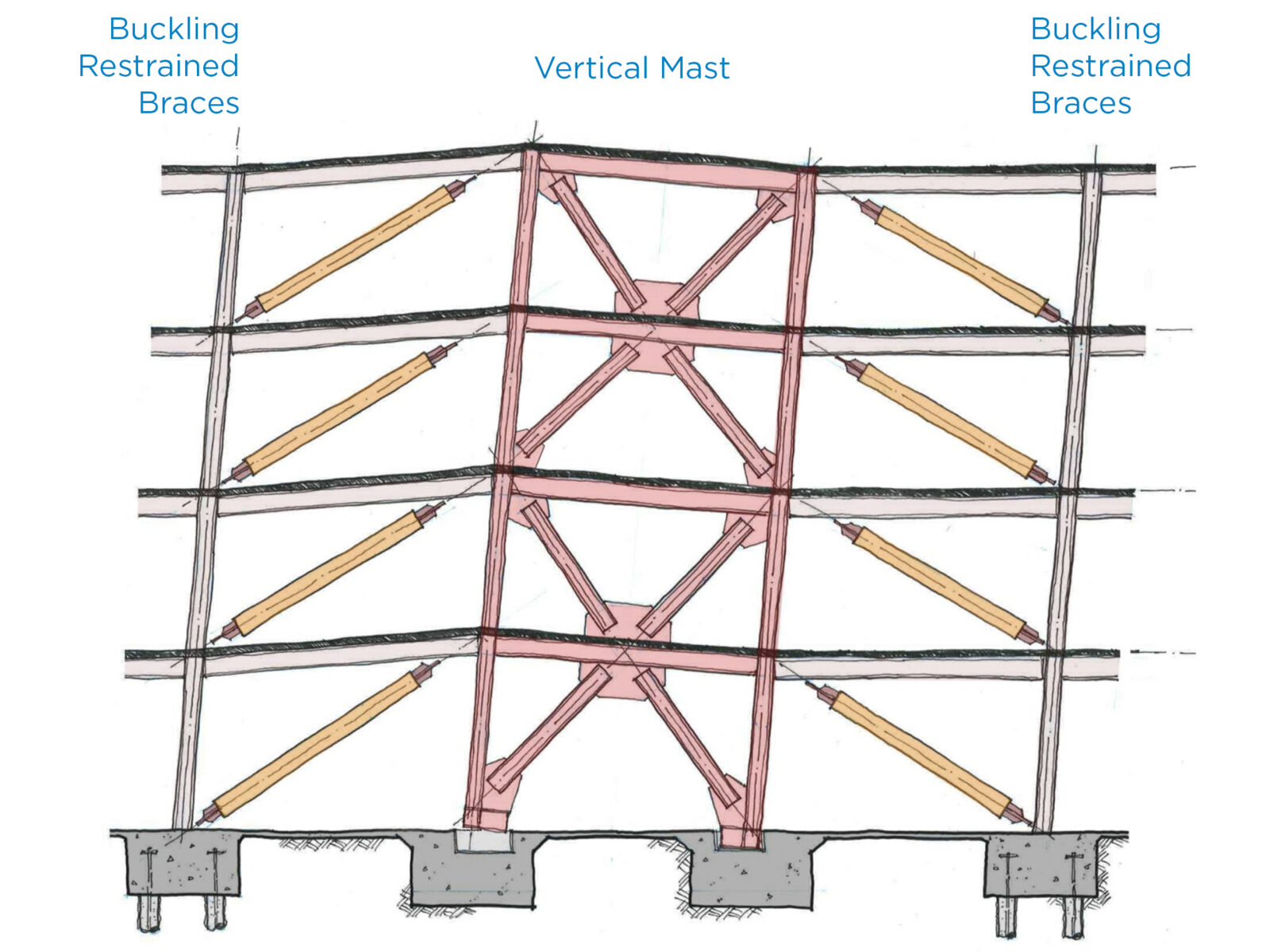
Improved performance with BRB mast frames
A mast-frame system uses BRBs, in conjunction with a vertical mast to reduce drift, eliminate weak stories, and increase redundancy. The yielding BRBs work together with an elastic mast frame to create a controlled rocking behavior that provides improved resiliency and protection for the building frame, cladding, and interior construction.
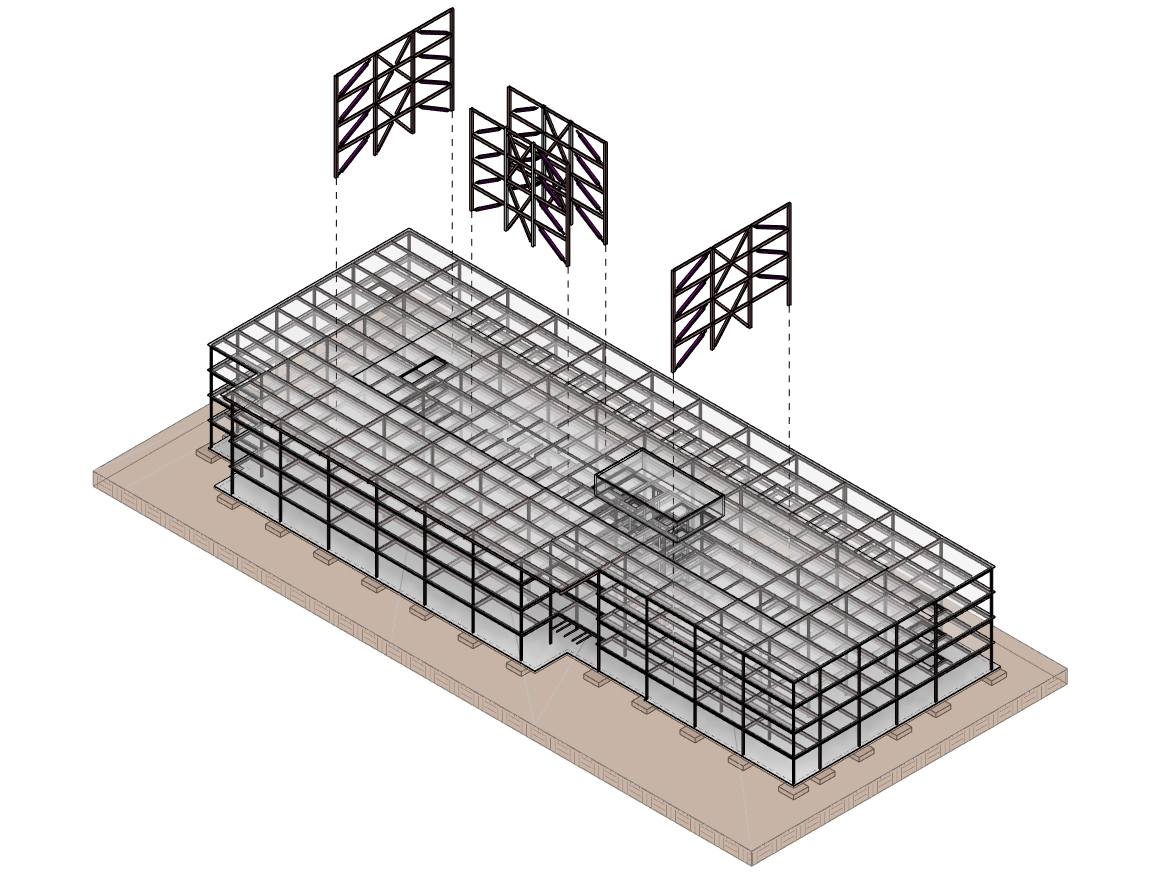
Mast Frame Rocking
The mast, also referred to as a strong-back, is a vertical truss that extends up the height of the structure, connecting the BRBs to form an integrated framework. This rocking vertical mast is made of conventional steel members and is designed to remain elastic during an earthquake. The mast occupies the same footprint and extent of a conventional frame, but allows for the use of fewer BRB members. By forcing all the BRBs in the system to work together to resist movement at any story, the mast fully mobilizes the BRB elements’ deformation capacity and increases the system’s inherent redundancy.
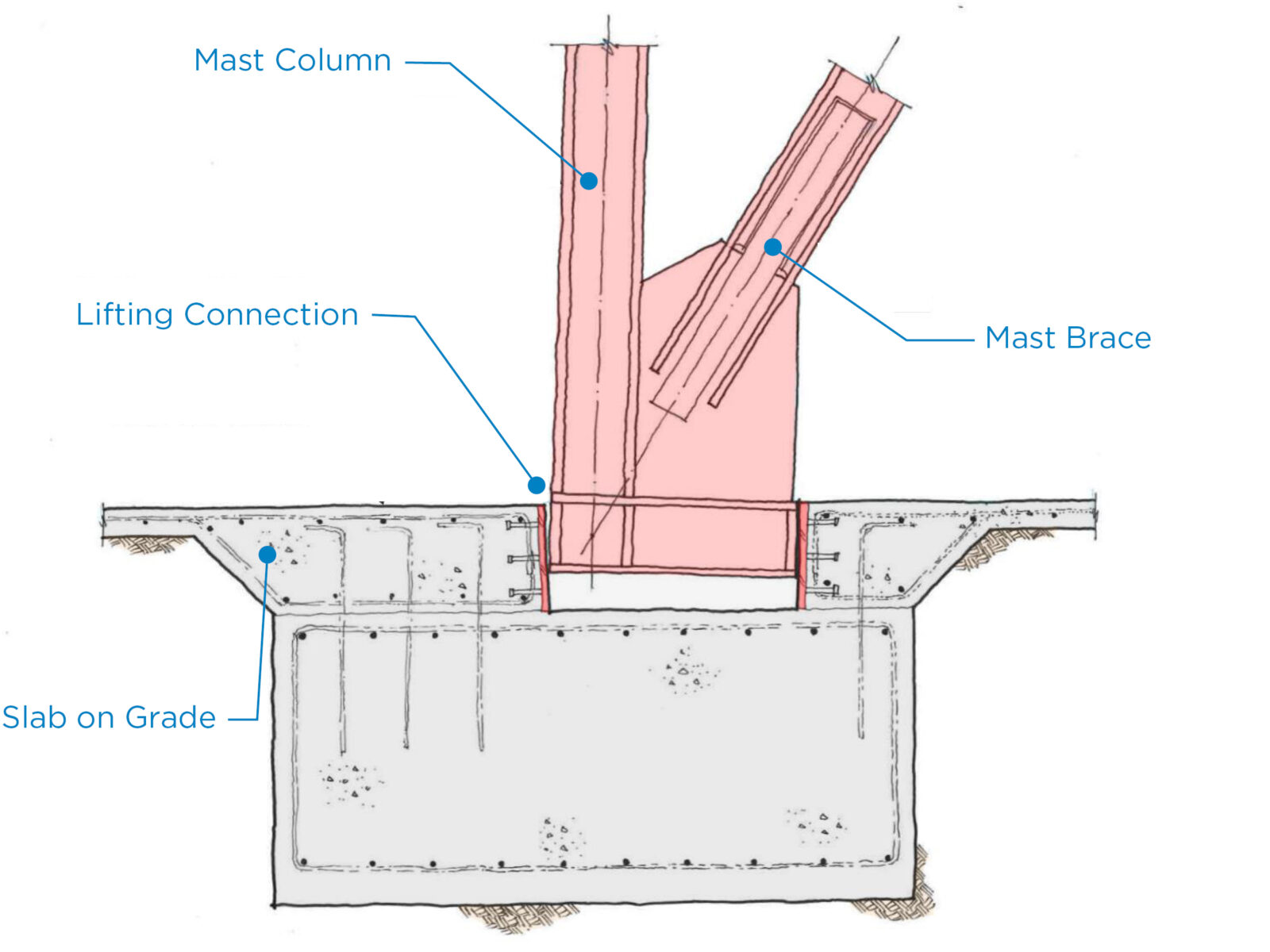
Mast Frame Base
Connections to the foundation elements facilitate rocking behavior by allowing the base of the columns to uplift within a recessed pocket in the spread footing. The mast resists a portion of the design lateral force, but is designed to remain elastic. The yielding BRBs provide all of the ductility and energy dissipation of the system.
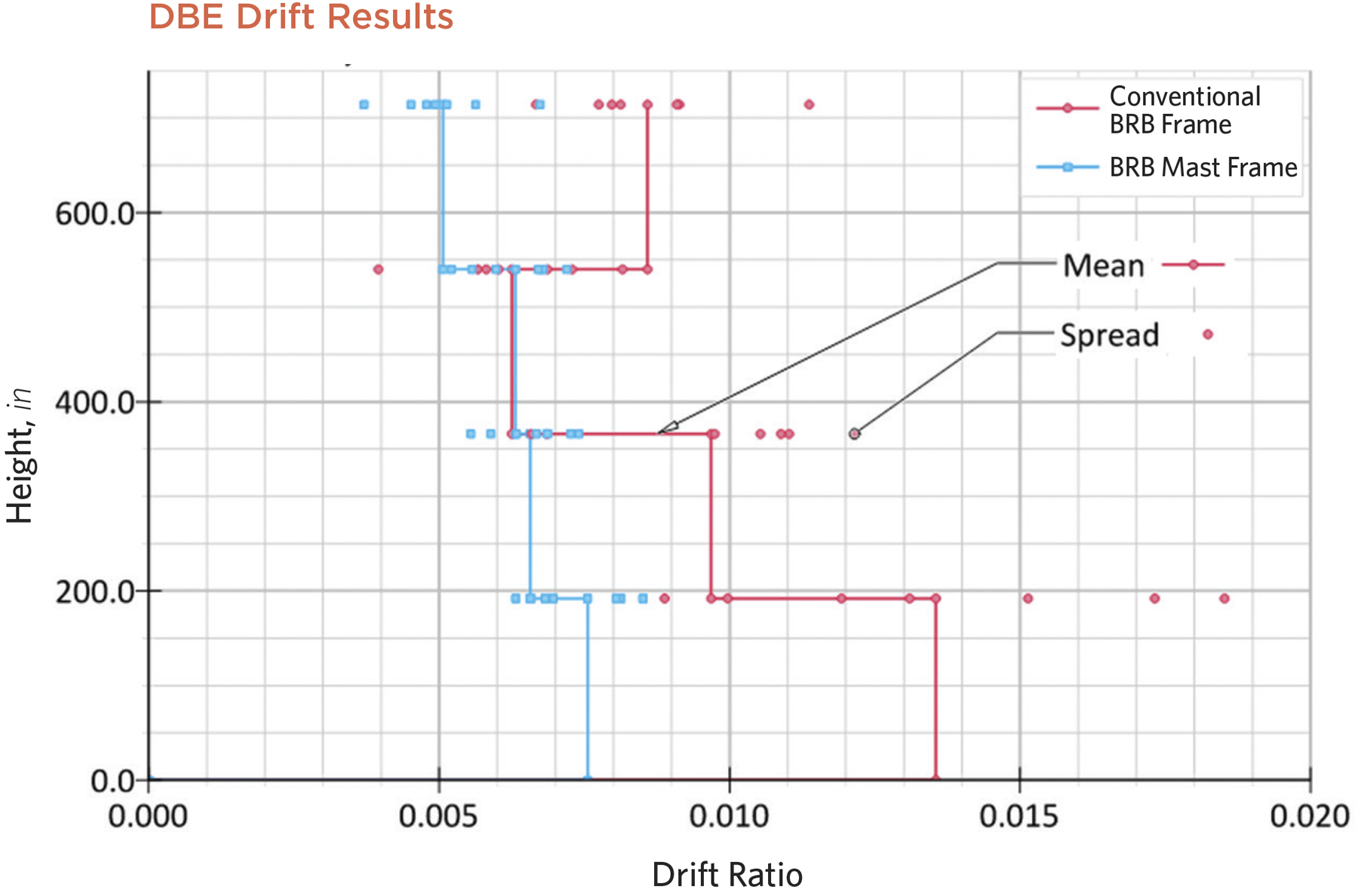
Performance Comparison
Confirmed through a suite of dynamic performance analyses, the BRB mast frame is far less sensitive to variation in ground motions and results in 50% less story drift and displacement than a conventional SCBF. A plot of the drift response from the nonlinear history analysis demonstrates significantly reduced drifts, a uniform drift profile with no weak stories, and more tightly clustered results, indicating less sensitivity to ground motions.
